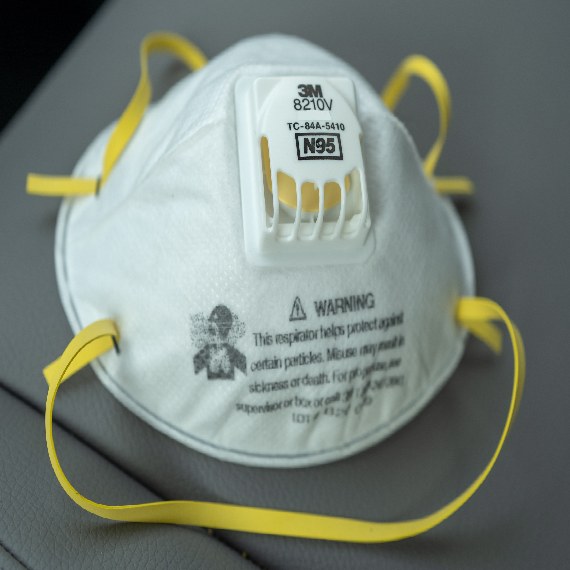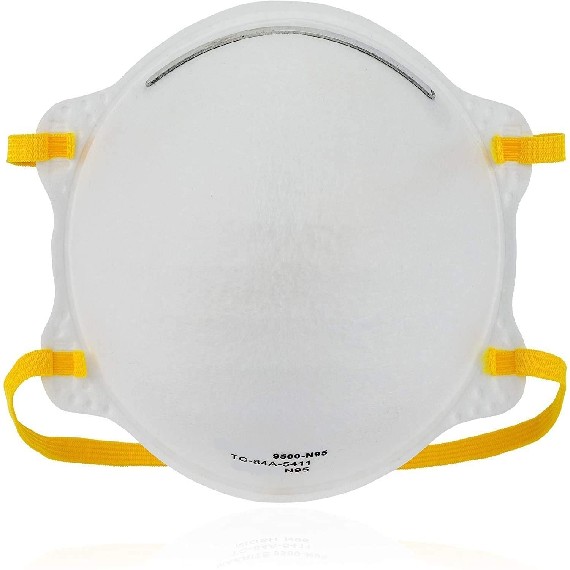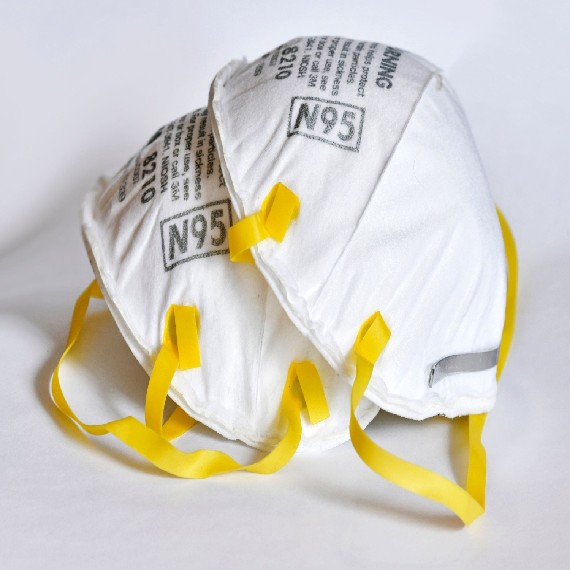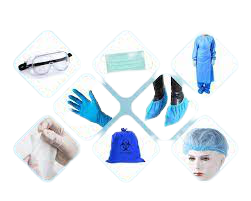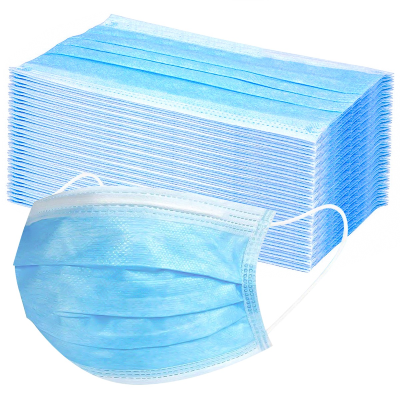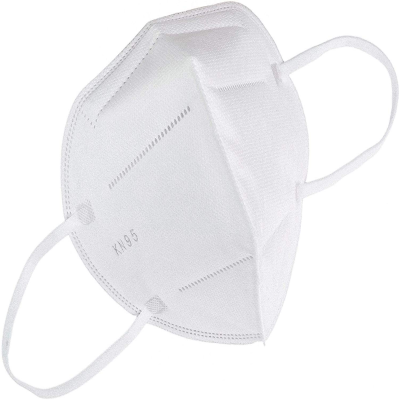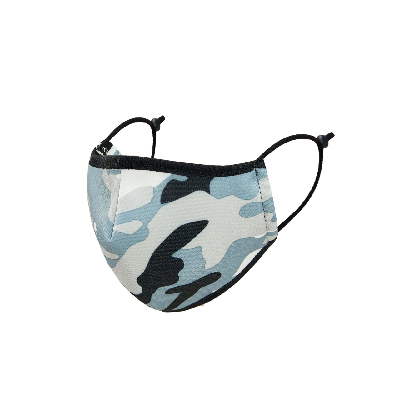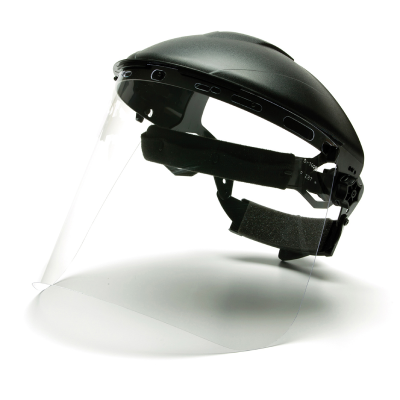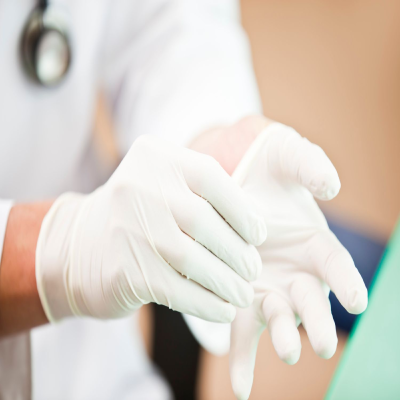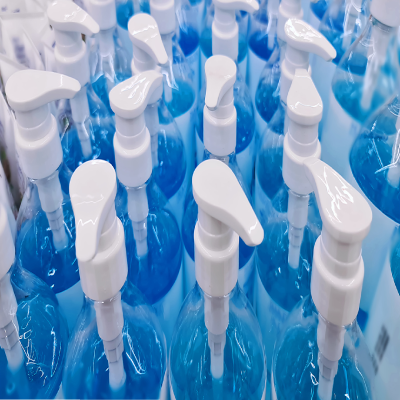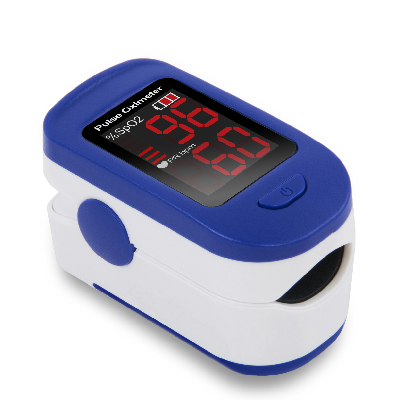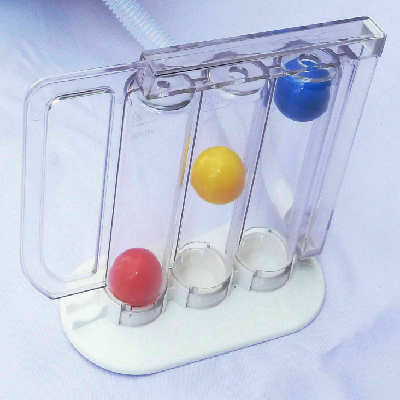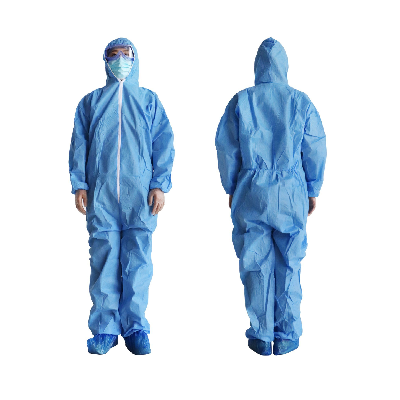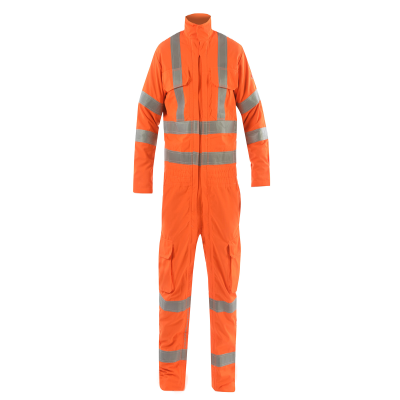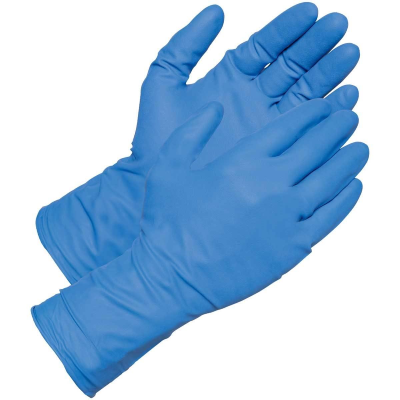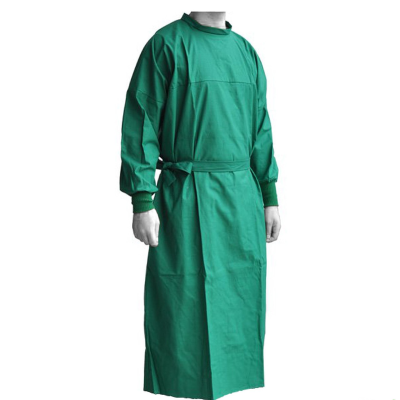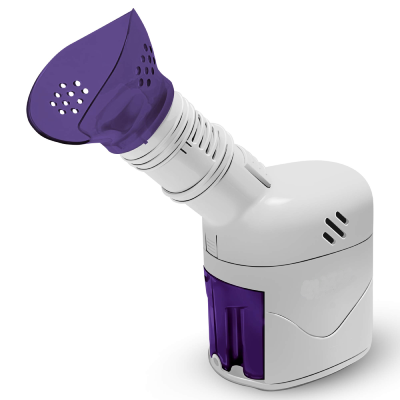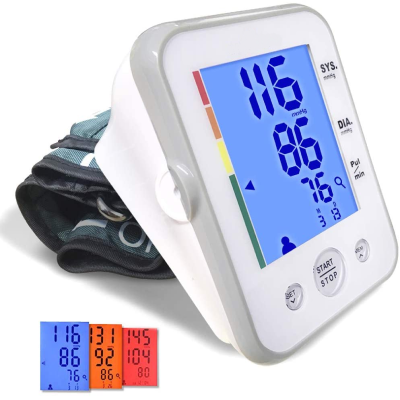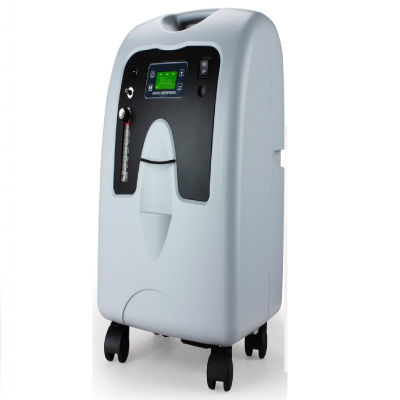Some N95 respirators, on the other hand, are designed for use in a medical environment. Single-use, disposable respiratory protection devices worn by health care workers during procedures to protect both the patient and the health care personnel from the transmission of microorganisms, body fluids, and particulates.
N95 Respirators Face Masks
Provides full protection by covering nose, mouth and chin
The N95 Particulate Respirator And Surgical Mask is made of soft inner materials that help protect the user's respiratory from airborne particles such as those generated by conductive gel, laser surgery, and other driven medical instruments. The flat-fold design allows for easy storage before use due to the individual packaging. The N95 Mask is designed to protect the wearer's respiratory system. The tangled fibers in these masks filter pathogens in the air, and they fit very close to the face. Around the mouth and nose, the edges form a seal. N95-mask can be used by healthcare staff in this Covid19 pandemic. As a surgical mammogram, it is designed to be fluid resistant to splash and spatter of blood and other infectious materials.
N95 Respirator And Surgical Mask Features
- N95 mask has a special chin tab that makes positioning, donning, and adjustment easy.
- The engraved top panel helps to prevent eyeglasses from fogging, while the sculpted top panel allows for more eyewear space.
- The smooth inner materials and soft nose foam feel good against the skin.
- Approved by the National Institute of Occupational Safety and Health (NIOSH): N95 Mask.
- The Food and Drug Administration (FDA) has been approved for use as a surgical mask.
- According to ASTM F2101, the BFE (Bacterial Filtration Efficiency) should be greater than 99 percent (omit: 5%).
- At 160 mm Hg, according to ASTM F1862, the highest degree of fluid resistance is achieved.
- The three-panel design in the n95 mask is adaptable to a variety of face shapes and sizes.
- Until using, individual packaging protects the respirator from contamination.
- Eyeglasses that work with a wide range of frames.
- The nose clip is adjustable, allowing for a more customized and comfortable fit.
- Operating rooms, clinics, TB wards, patient care, labor and delivery, infection control practices, laboratory, emergency or pandemic preparedness preparation, stockpiling, and so on are all possible settings and implementations.
- This N95 Mask is Latex-Free.
How do you check the seal on a Covid Face Mask?
- Fully cover the middle panel with one or both hands.
- Sharply inhale and exhale.
- Take care not to disrupt the respirator's location.
- Re-adjust the nosepiece if air escapes around your nose.
- If air escapes around the edges of the respirator, change the panels and brace positions to ensure the respirator edges fit snugly against the face.
whenever you use your mask, it is essential to examine the seal.
Do not touch the infected area if a proper seal cannot be achieved. Consult with your supervisors.
What is the best place to handle the N95 Surgical Mask?
- Remove the mask from its packaging and place it on your face with the straps facing up. Under the center flaps, place the bottom strap next to the "ATTENTION" comment.
- Fold the top and bottom panels open, then bend the nosepiece around your thumb in the foam's middle. When the panels are opened, the straps should separate. Make sure the bottom panel is completely opened and unfolded.
- Place the N95 respirator on your face with the foam on your nose and the bottom panel securely under your chin.
- Place the top strap high on the back of your head and pull it over your head. Pull the bottom strap over your head and around your neck, just behind your ears.
- Push the top panel toward the bridge of your nose and the bottom panel under your chin for a comfortable fit. Make sure your hair, facial hair, jewelry, and clothes aren't in the way of the respirator because they'll obstruct the fit.
- Place your fingertips on the top of the metal nosepiece with both hands. Pressure inward when running your fingertips down both sides of the nosepiece with two hands to mold the nose region to the shape of your nose.
NOTE: When molding the nosepiece, always use two hands. Pinching the nosepiece with one hand can result in a poor fit and poor output from the respirator.
How can the N95 Mask be removed?
- Slowly raise the bottom strap from around your neck up over your head without reaching the respirator facepiece.
- Remove the top strap. Do not put your hands on the respirator.
- Depending on the facility's infection prevention program, you can either keep it or throw it away.
Precautions for N95 Respirators Mask
- People with chronic respiratory, cardiac, or other medical problems that render breathing difficult should consult their doctor before wearing an N95 respirator, as the N95 respirator Mask can make breathing more difficult.
- Exhalation valves are available in certain designs, which make it easier to breathe out while also reducing heat build-up. When sterile conditions are needed, N95 respirators with exhalation valves should not be used.
- N95 respirators that have received FDA approval are all branded as "single-use," disposable products. If your respirator becomes damaged or soiled, or if breathing becomes difficult, remove it, properly dispose of it, and substitute it with a new one. Place your N95 respirator in a plastic bag and toss it in the garbage to safely dispose of it. After handling the used respirator, wash your face.
- Children and young adults with facial hair do not use N95 respirators. The N95 respirator can not offer complete security to children and people with facial hair because a proper fit cannot be achieved.
Related products
FAQ About N95 Surgical Mask
- Maximum Protection: Forms an airtight seal while allowing filtration of inhaled and exhaled air.
- Comfortable to Wear: Soft material suits the contours of the face and is very comfortable to wear. Its self-sealing nature removes the need for a nose bridge and ear straps, which can irritate the skin and pressure sores.
- Breathable: Electrostatic particle filtration properties make it easy to breathe.
- It stays in place: There's no need to change it when it's in operation. Occlusion of vision and fogging of eyewear to a minimum.
- Convenient Storage: Folds flat like a sheet of fabric, making it simple to store additional masks locally.
Yes, absolutely. The specific mask configuration meets N95 qualitative and quantitative fit-test criteria when properly worn. If you'd like to see a quick video on how to apply the N95 mask properly for your fittest.
Yes, really. The concept is NIOSH-approved and complies with ASTM filtration requirements. The special air-purifying filter material is built to provide safety while also enhancing breathing comfort and airflow temperature.
Around the circumference of the mask, we use hypoallergenic medical-grade adhesive. The ISO10993 standard is used to assess our adhesives for biocompatibility. Material Safety Data Sheets (MSDS) and summaries of component biocompatibility testing results (ISO 10993), if available, will be given upon request. Customers can conduct their own final product reviews in accordance with applicable regulatory requirements. This product should not be used on people who are allergic to the mask or its components or have had an allergic reaction to them. Consult a healthcare professional if itching (reddening, inflammation), maceration (whitening of the skin), or allergy (allergic reaction) occurs.
No, it's just not true. There are no natural rubber latex components in this N95 mask.
When temporary removal is needed, place the N95 mask on a flat surface with the adhesive side up or re-adhere the mask to the original release liner in a clean, dry environment (the release liner is the material on the back-side perimeter of the mask used to protect the adhesive before use).
The product is approved for distribution in and around Coimbatore, Erode, Karur, Chennai, Tiruppur, Ooty, Mettupalayam, Trichy, Salem, Pollachi and apart from Tamilnadu, we extend to Palakkad. And ready to distribute in other places in India.
Without causing any adhesion loss, the N95 mask can be repositioned, briefly detached, and reapplied. The number of times the mask can be reapplied is determined by the skin type, work environment, and level of operation. It is, however, a single-use N95 particulate respirator that should not be used for more than one day.
The CDC's strategy for maximizing the availability of N95 FFRs while stocks are running low includes using them beyond the manufacturer's recommended shelf life. Expired respirators should be used with care, according to the CDC, because “components such as the straps and nose bridge material can degrade, which can affect the consistency of the feces.”
The CDC recommends that healthcare workers “consider using a cleanable face shield (preferred) over an N95 respirator to avoid surface contamination,” citing a study that found that wearing a surgical mask as a cover for an N95 FFR increases consumer burden and that To minimize N95 respirator contamination, a cleanable face shield is highly recommended over a surgical mask. Concerns have been raised that surgical mask supplies could be restricted during a public health emergency and that wearing a surgical mask may interfere with the N95 respirator's work.
Masks should be worn in crowded environments, where you can't be at least 1 meter away from others, and in rooms with low or uncertain ventilation in places where the virus is circulating. The level of ventilation, which is determined by the rate of air shift, recirculation, and outdoor fresh air, is not always easy to evaluate. So, if you have any questions, don't hesitate to ask.
Always wash your hands before and after using a mask, as well as before touching it while it's on.
And if you're wearing a mask, you can maintain as much physical distance from others as possible. You cannot have close contact with people while wearing a mask.
If you can't keep a physical distance from others when outside, wear a mask. Busy markets, crowded streets, and bus stops are only a few examples.
If you can't keep a physical distance or the ventilation is bad, wear a mask if a guest who isn't a family member comes to your house.
Address
#31, EB Colony,
Kurumbapalayam, Coimbatore, Tamilnadu, India


